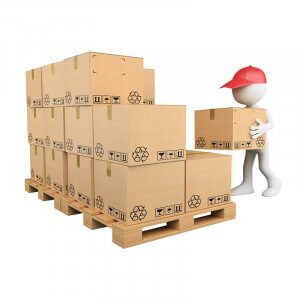We’re all familiar with the Inventory Cleanup in mid-February and August, when unsold inventory is assessed to determine the FBA storage fees that sellers owe Amazon. But now it looks like Amazon is trying to take things one step further by paying sellers to recall or destroy their unsold items by April 30.
To find out what this could mean for your business, please continue reading.
The Amazon Spring Cleanup
You may remember Amazon waiving removal fees last fall with a three-month no-return policy. In an attempt to free up more floor space in its warehouses for fast-selling items, Amazon has recently announced that it will be waiving its Removal Fees all month and refunding part of the paid Long-Term Storage Fees, as long as items with low sales are not returned before October 1.
What This Means For You
As of March 31, 2016, you can process FBA removal orders for free if the inventory is stored in any of Amazon’s U.S. fulfillment centers. Amazon is waiving return and disposal fees up until April 30, 2016, when charges revert to normal. It’s also suppressing listings with missing information to optimize content and maximize page views.
For all sellable items with a pending removal order, no further units will be accepted until October 1, except if you currently store less than what you’ve sold in the past four weeks. Removal orders filed after February 28 will be refunded if the inventory was unfulfillable or stranded (i.e. unsellable).
If you’re a Professional account holder, the FBA Inventory Age page will be on your Inventory Dashboard. Otherwise, you can check how old your inventory is by downloading the report in Seller Central > Fulfillment Reports> Inventory Age.
The Upside
This is a good opportunity to recall your unsold inventory for free, especially if your removal fees are higher than your storage fees. Also, if you had disappointing sales on Cyber Monday, Valentine’s Day, Halloween, or at Christmas time, this may be your only chance to dispose of that inventory.
Finally, if you’ve already paid your Long-Term Storage Fee in February, Amazon will reimburse 66% per cubic foot, per unit. Check your payments using the Long-Term Storage Fee Charges report.
The beauty of it is that sellers can only gain from it. Aside from Amazon paying you to remove your inventories , you will also be able to write that inventory off for tax purposes if you choose to have it disposed of. But, if you’d rather have it returned to you, you’ll receive it in free air-packs and cardboard boxes, which are yours to use as you see fit.
The Downside
Unfortunately, once you’ve had items returned to you, you won’t be able to send them back until October. This eliminates the risk of having sellers that process their removal orders just before the day that the Long-Term Storage Fee is due, and then return their items back to Amazon soon after the ‘re-inbound’ problem.
Also, while this may be a win-win situation for Amazon and most FBA sellers, it looks as though our SellerEngine Plus and Profit Bandit users have been coming across an error lately. If you come across a message when you try to create shipments saying:
“You are already at the maximum inventory allowed for this product, due to capacity or other restrictions. This product must be removed from this shipment”
it simply means Amazon is low on storage space and trying to avoid the ‘re-inbound’ situation. You would come across the same error message if you created your FBA shipment manually, or using other apps. Our suggestion is that you try to identify the reason for the error message (i.e. low sales recently, missing information on the product page, too many units already in stock).
If there seems to be no justifiable reason, and you’re confident your item could sell well with Amazon fulfillment, then please contact Amazon.
Irina H. is our International Business Development Specialist and our company do-all, whose motto is ‘Never give up, never give in, and always give it your best’.
